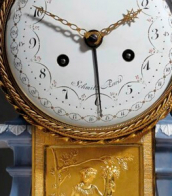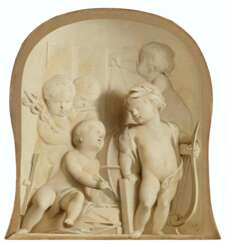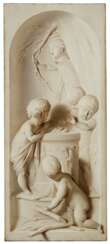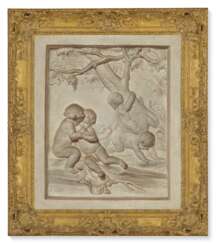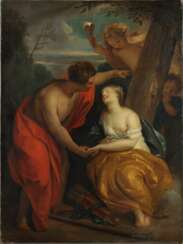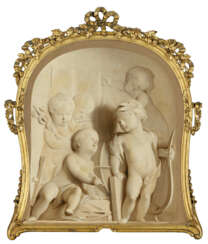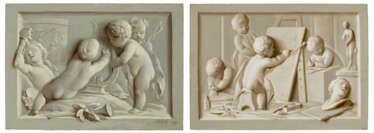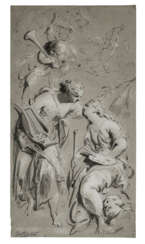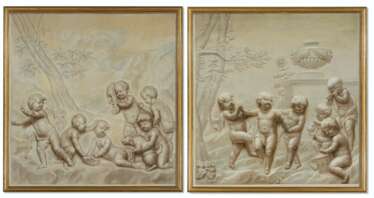якоб де вит (1695 - 1754)
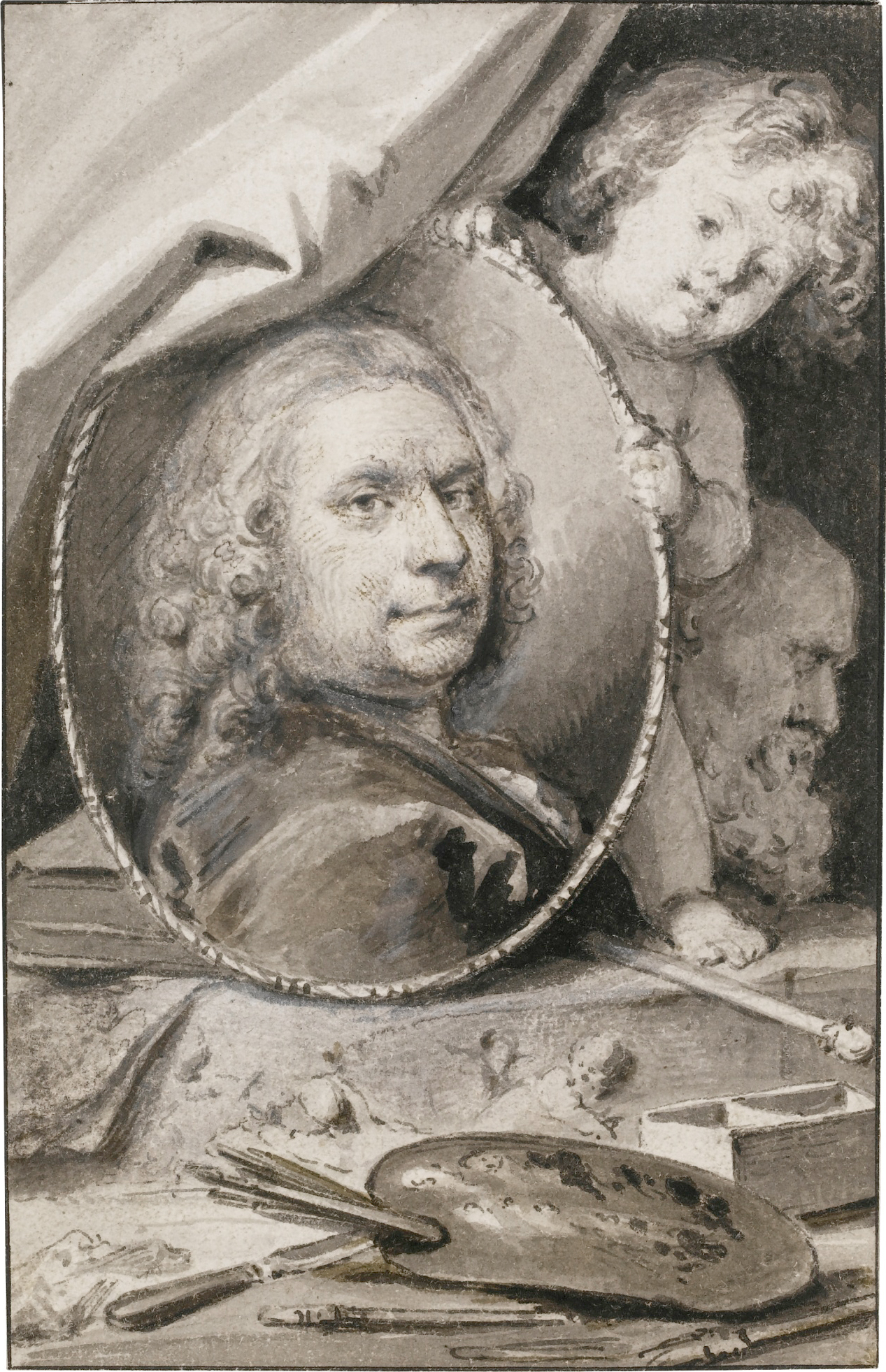
Jacob de Wit was a Dutch painter, decorator and collector, a member of the Guild of St. Luke in Antwerp.
De Wit studied at the Royal Academy in Antwerp, where he began to study the work of Peter Paul Rubens and became his follower. De Wit made copies of many of Rubens' works, notably his ceiling paintings in the Jesuit church in Antwerp.
Later, from the 1720s Jacob de Wit began working in Amsterdam, where he received regular commissions, both public and private. He created many ceiling and wall paintings in the Rococo style, in which he used grisaille - gray and white painting, creating the illusion of three-dimensionality, or bas-relief. Some of them can still be seen in their original places in the 21st century.
Jacob de Wit amassed a large art collection during his lifetime, including works by Rubens, Antoni van Dyck, as well as Dutch and Flemish contemporaries and old masters.
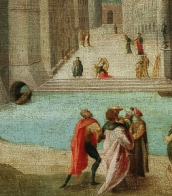

Jacob de Wit was a Dutch painter, decorator and collector, a member of the Guild of St. Luke in Antwerp.
De Wit studied at the Royal Academy in Antwerp, where he began to study the work of Peter Paul Rubens and became his follower. De Wit made copies of many of Rubens' works, notably his ceiling paintings in the Jesuit church in Antwerp.
Later, from the 1720s Jacob de Wit began working in Amsterdam, where he received regular commissions, both public and private. He created many ceiling and wall paintings in the Rococo style, in which he used grisaille - gray and white painting, creating the illusion of three-dimensionality, or bas-relief. Some of them can still be seen in their original places in the 21st century.
Jacob de Wit amassed a large art collection during his lifetime, including works by Rubens, Antoni van Dyck, as well as Dutch and Flemish contemporaries and old masters.


Jacob de Wit was a Dutch painter, decorator and collector, a member of the Guild of St. Luke in Antwerp.
De Wit studied at the Royal Academy in Antwerp, where he began to study the work of Peter Paul Rubens and became his follower. De Wit made copies of many of Rubens' works, notably his ceiling paintings in the Jesuit church in Antwerp.
Later, from the 1720s Jacob de Wit began working in Amsterdam, where he received regular commissions, both public and private. He created many ceiling and wall paintings in the Rococo style, in which he used grisaille - gray and white painting, creating the illusion of three-dimensionality, or bas-relief. Some of them can still be seen in their original places in the 21st century.
Jacob de Wit amassed a large art collection during his lifetime, including works by Rubens, Antoni van Dyck, as well as Dutch and Flemish contemporaries and old masters.
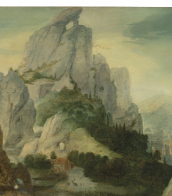

Jacob de Wit was a Dutch painter, decorator and collector, a member of the Guild of St. Luke in Antwerp.
De Wit studied at the Royal Academy in Antwerp, where he began to study the work of Peter Paul Rubens and became his follower. De Wit made copies of many of Rubens' works, notably his ceiling paintings in the Jesuit church in Antwerp.
Later, from the 1720s Jacob de Wit began working in Amsterdam, where he received regular commissions, both public and private. He created many ceiling and wall paintings in the Rococo style, in which he used grisaille - gray and white painting, creating the illusion of three-dimensionality, or bas-relief. Some of them can still be seen in their original places in the 21st century.
Jacob de Wit amassed a large art collection during his lifetime, including works by Rubens, Antoni van Dyck, as well as Dutch and Flemish contemporaries and old masters.
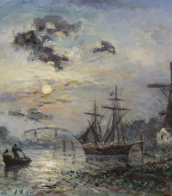

Jacob de Wit was a Dutch painter, decorator and collector, a member of the Guild of St. Luke in Antwerp.
De Wit studied at the Royal Academy in Antwerp, where he began to study the work of Peter Paul Rubens and became his follower. De Wit made copies of many of Rubens' works, notably his ceiling paintings in the Jesuit church in Antwerp.
Later, from the 1720s Jacob de Wit began working in Amsterdam, where he received regular commissions, both public and private. He created many ceiling and wall paintings in the Rococo style, in which he used grisaille - gray and white painting, creating the illusion of three-dimensionality, or bas-relief. Some of them can still be seen in their original places in the 21st century.
Jacob de Wit amassed a large art collection during his lifetime, including works by Rubens, Antoni van Dyck, as well as Dutch and Flemish contemporaries and old masters.
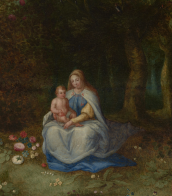

Jacob de Wit was a Dutch painter, decorator and collector, a member of the Guild of St. Luke in Antwerp.
De Wit studied at the Royal Academy in Antwerp, where he began to study the work of Peter Paul Rubens and became his follower. De Wit made copies of many of Rubens' works, notably his ceiling paintings in the Jesuit church in Antwerp.
Later, from the 1720s Jacob de Wit began working in Amsterdam, where he received regular commissions, both public and private. He created many ceiling and wall paintings in the Rococo style, in which he used grisaille - gray and white painting, creating the illusion of three-dimensionality, or bas-relief. Some of them can still be seen in their original places in the 21st century.
Jacob de Wit amassed a large art collection during his lifetime, including works by Rubens, Antoni van Dyck, as well as Dutch and Flemish contemporaries and old masters.
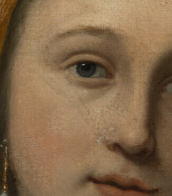

Jacob de Wit was a Dutch painter, decorator and collector, a member of the Guild of St. Luke in Antwerp.
De Wit studied at the Royal Academy in Antwerp, where he began to study the work of Peter Paul Rubens and became his follower. De Wit made copies of many of Rubens' works, notably his ceiling paintings in the Jesuit church in Antwerp.
Later, from the 1720s Jacob de Wit began working in Amsterdam, where he received regular commissions, both public and private. He created many ceiling and wall paintings in the Rococo style, in which he used grisaille - gray and white painting, creating the illusion of three-dimensionality, or bas-relief. Some of them can still be seen in their original places in the 21st century.
Jacob de Wit amassed a large art collection during his lifetime, including works by Rubens, Antoni van Dyck, as well as Dutch and Flemish contemporaries and old masters.
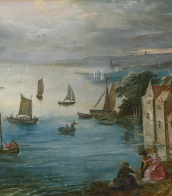

Jacob de Wit was a Dutch painter, decorator and collector, a member of the Guild of St. Luke in Antwerp.
De Wit studied at the Royal Academy in Antwerp, where he began to study the work of Peter Paul Rubens and became his follower. De Wit made copies of many of Rubens' works, notably his ceiling paintings in the Jesuit church in Antwerp.
Later, from the 1720s Jacob de Wit began working in Amsterdam, where he received regular commissions, both public and private. He created many ceiling and wall paintings in the Rococo style, in which he used grisaille - gray and white painting, creating the illusion of three-dimensionality, or bas-relief. Some of them can still be seen in their original places in the 21st century.
Jacob de Wit amassed a large art collection during his lifetime, including works by Rubens, Antoni van Dyck, as well as Dutch and Flemish contemporaries and old masters.
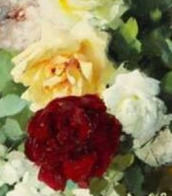

Jacob de Wit was a Dutch painter, decorator and collector, a member of the Guild of St. Luke in Antwerp.
De Wit studied at the Royal Academy in Antwerp, where he began to study the work of Peter Paul Rubens and became his follower. De Wit made copies of many of Rubens' works, notably his ceiling paintings in the Jesuit church in Antwerp.
Later, from the 1720s Jacob de Wit began working in Amsterdam, where he received regular commissions, both public and private. He created many ceiling and wall paintings in the Rococo style, in which he used grisaille - gray and white painting, creating the illusion of three-dimensionality, or bas-relief. Some of them can still be seen in their original places in the 21st century.
Jacob de Wit amassed a large art collection during his lifetime, including works by Rubens, Antoni van Dyck, as well as Dutch and Flemish contemporaries and old masters.
